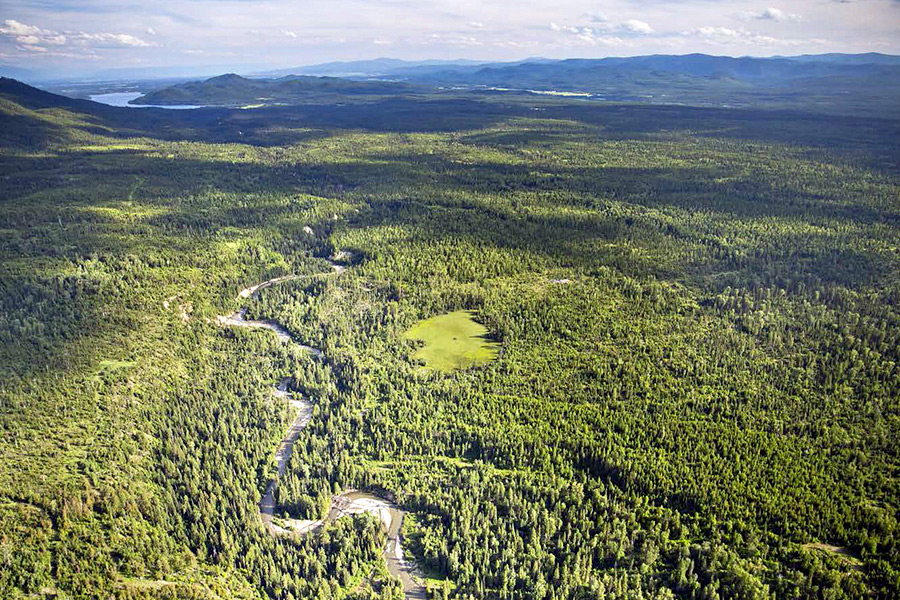Strange bedfellows are the logger and the conservationist, the motorist and the cyclist, yet here in the Flathead Valley those typically bifurcated corners of public forest planning have joined forces in an effort to change the way federal lands are managed.
Five years ago, a coalition of stakeholder groups with competing interests convened a working group to discuss the Whitefish Range within the Flathead National Forest, where a proposed management plan was recently released to guide the land’s uses for the next decade or more.
Calling themselves the Whitefish Range Partnership, its members began gathering every other week for chili feeds and cheeseburgers to find common ground and thrash out their differences.
What emerged in the final plan was less a compromise than a proposal in which everyone gathered at the table gained something without losing anything of substance. They agreed to increase the timber harvest on suitable lands while expanding the minimum area of suggested wilderness. They increased the amount of available terrain to snowmobiles and other motorized uses and found mountain bikers new opportunities to expand trail systems.
The Whitefish Range Partnership consisted of three-dozen interest groups who historically clashed over public land use on Montana’s forests, pitting wilderness against timber production, non-motorized against motorized recreation, commercial interests against wildlife.
“By the time we got to know each other, we agreed on certain values and that proved very important,” said Michael Jamison of the National Parks Conservation Association, who helped organize the planning efforts. “At first we viewed one another either as an environmentalist or a motorist. Everyone was an ‘ist or an ‘ism. But really in the end we’re just people trying to live on the same map.”
Through collaboration, the members of the Whitefish Range Partnership found a way to maximize their influence in drawing the contours of that map.
“We actually increased everybody’s take-home,” Jamison said. “I don’t know anyone who lost.”
The Whitefish Range Partnership focused on about one-seventh of the Flathead National Forest’s 2.4 million acres, including Big Mountain, the Tuchuck and Thompson-Seton inventoried roadless areas, and a patchwork of timberlands, forest roads, old bike trails, remote campgrounds and fire lookouts.
The western boundary of the Whitefish Range tracks along the Lincoln-Flathead county line. The Canadian border and a transboundary wildlife corridor cross its northern edge. The North Fork Flathead River, a federal Wild and Scenic River, and Glacier National Park mark the eastern boundary.
Paul McKenzie, land and resource manager for F.H. Stoltze Land and Lumber in Columbia Falls, said the spirit of collaboration helped weave together a proposal that captured a diverse range of interests outside the confines of the federal government. Although U.S. Forest Service representatives were highly engaged in the group’s meetings, the partnership defined its own process.
“I think it was a good process,” McKenzie said. “It took a lot of effort from a lot of folks, and one key element was that the partnership was citizens coming together, not the Forest Service. It was a focused, citizen-driven collaboration that resulted in recommendations to the Forest Service, which they took and in large part implemented in their plan.”
It’s a far cry from past and current trends, where litigation is the choice tool for many environmental groups trying to force change on public lands, in Montana and across the West, but collaboration isn’t a new concept, even if it hasn’t always succeeded. In some cases, it’s stumbled hard and fallen on its face.
In Montana, some of the best examples of local collaborations were born of intense infighting among polarized factions. In the Yaak Valley, the timber wars persisted for decades — environmental absolutists monkey-wrenched and out-of-work loggers retaliated.
In some cases, the feuding came to blows. There were threats and violence, while other arguments were laid out in court papers and mired in plodding legal battles.
“It’s a different ballgame today,” said Steve Thompson, a longtime advocate for conservation and collaboration in the region and a principal founder of the Flathead Forestry Project, which in 1995 sought to pass legislation empowering loggers and turning the old process for timber sales on its head.
Back then, land protection took a back seat to profit, and timber mills hired the lowest-bidding loggers to cut trees. Thompson’s bill encouraged the Forest Service to hire loggers as stewards of the land and improve the forest’s overall health while feeding the mills.
“Back when we started some of this 25 years ago, it was a really pitched battle. We were really fighting clear cuts and the industry’s influence to build roads in roadless areas, and all of a sudden I started talking to mills and loggers who shared our concerns,” Thompson said. “We would go on these field trips together and talk about the opportunities to improve the health of the landscapes, and just the process of having those conversations built a lot of trust. We all realized that we had the same basic value system and we weren’t accomplishing anything during the timber wars.”
